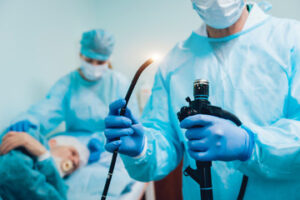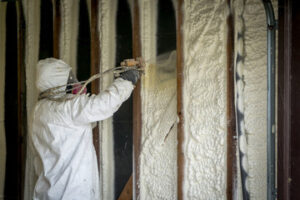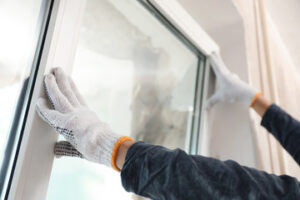A colonoscopy is an important test that helps doctors diagnose and treat conditions in your large bowel. To get the best results, your bowel must be empty for the procedure, which requires changing your diet and taking laxatives.

Doctors use a long flexible tube with a camera to look at the large bowel and remove small growths called polyps. These are usually harmless but could become cancer if left untreated. Read on Copper Mountain Surgical for more information.
A colonoscopy is a procedure that lets your health care provider check the inside of your rectum and colon (large intestine). It may also help remove polyps, or abnormal growths. The health care provider uses a long, flexible tube with a light and a tiny camera on the end, called a colonoscope. He or she puts the tube into your anus, and then moves it through the rectum and colon. The doctor can see inflamed tissue, ulcers and polyps, and may take a sample of colon tissue for examination. A virtual colonoscopy and a flexible sigmoidoscopy are other types of tests that let your health care provider look at the inside of your colon, but they do not use a colonoscope.
Most of the time, a colonoscopy finds nothing to worry about. But it may be done to find the cause of unexplained symptoms like abdominal pain, a change in bowel habits or rectal bleeding. It can also be used to screen for colorectal cancer, especially if you have a family history of the disease or a personal history of inflammatory bowel diseases like ulcerative colitis. Most colorectal cancers start as noncancerous polyps. Finding and removing polyps can prevent cancer from developing.
A screening colonoscopy is recommended for anyone over age 45, and even younger if your health care provider thinks you are at higher risk of colorectal cancer. Your health care provider can explain whether you need a screening colonoscopy, and when you should have it.
At the end of a screening colonoscopy, your health care provider can remove any polyps that are found. You should have regular repeat screenings with a colonoscopy or other test, such as a stool test, to monitor your colon for polyps and cancer.
Before your colonoscopy, you will need to drink a special liquid for several hours. Your health care provider will give you specific instructions for this bowel preparation, which can vary between hospitals and doctors. You will need to stay close to a toilet the day before your procedure, and you should only drink clear liquids like water, broth, tea without milk, white grape juice and apple juice.
Procedure
The doctor may insert a tube with a camera at its tip through the anus into the rectum and colon. The doctor can identify, remove and, in some cases, biopsy (study) polyps (abnormal growths that could turn into cancer). The laxative prep used to clear out the colon before this test helps to prevent stool from hiding these abnormalities. The doctor can also use the procedure to help diagnose and treat inflammatory bowel diseases, such as Crohn’s disease and ulcerative colitis. These diseases cause inflammation, pain, and malnourishment of the colon lining and can lead to serious complications including bowel blockages and intestinal surgery. The colonoscopy can also detect diverticulosis, a condition in which small pockets develop on the inside lining of the colon. Identifying this early with a colonoscopy allows doctors to make recommendations for simple dietary changes that can stop these pockets from becoming inflamed and causing pain.
The procedure is done under sedation, which means that you won’t remember it or feel any pain. The sedation is given through an intravenous line into a vein in your arm or hand. Before the sedation begins, you will be given medications to empty your bowel, usually through an enema or rectal laxative suppository and liquids that contain a special acid. Depending on your situation, the doctor may need to change the amount of laxative solution you take or give you different medication to prepare your bowel before the test.
After the procedure, you’ll stay in a recovery room until the effects of the sedation wear off. You may experience some discomfort for up to 24 hours, such as stomach cramps or gas pain. You might pass a small amount of blood during your first bowel movement after the procedure. This is normal.
You must arrange for someone to drive you home after the procedure, because the sedatives can affect your ability to think clearly and concentrate. It’s important for your safety that you don’t drive until someone has taken you home and can monitor your reaction to the sedatives and anesthesia.
Preparation
Your doctor will give you specific instructions for preparing for the test. This may include not eating anything but clear liquids the day before, and taking a prescription bowel prep that contains laxatives. The laxatives help empty your colon so your doctor can see what is going on inside. The bowel prep can come in the form of pills (bisacodyl) that you swallow or a mixture that you add to water, like Golytely or polyethylene glycol (PEG). You drink this over several hours during the afternoon and night before your colonoscopy. The prep can cause diarrhea and multiple trips to the bathroom.
It is important to follow your doctor’s preparation instructions exactly to avoid cancelling your procedure or experiencing serious side effects. For example, you will need to stop taking medicines that affect blood clotting, such as aspirin or ibuprofen, for at least three days before the test. You also need to make arrangements for someone to drive you to and from the hospital for the procedure and bring you home afterward because the sedatives and anesthesia used during a colonoscopy will make you drowsy and weak.
During a colonoscopy, you will lie on a table while the doctor inserts the scope through your anus into your rectum and colon. The doctor will use a camera to take video images of the bowel lining, and may also remove a sample of tissue for laboratory testing. After the test is complete, your doctor will discuss any findings and recommendations with you.
Some people experience pain or cramping in their tummy after a colonoscopy. This is due to the carbon dioxide or air that was blown into the bowel, and it usually goes away after a few hours. Some people also have a small tear in the bowel wall, which is rare and needs to be treated with medication or surgery.
When you are recovering from a colonoscopy, it is important to gradually return to your normal diet starting with easy-to-digest foods, such as apples and broth. Over time, you can work your way up to more complex foods.
Recovery
You may feel some discomfort or bloating in your tummy after the procedure, but this should go away soon. The procedure is also likely to make you thirsty, so drink lots of fluids, especially water. Avoid caffeine-containing drinks and caffeinated foods, as they can interfere with your colon’s function and cause irritation.
You’ll have to follow a clear liquid diet for a day before the test, and you’ll probably have to take a laxative as well. This can be in the form of pills, a powder that you dissolve in liquid, an enema, or a combination of these. The laxative can cause diarrhea, so you’ll need to stay close to the bathroom.
During the procedure, you’ll lie on your back while the doctor inserts the scope into your rectum. It’s a long tube, and the doctor can see your entire large intestine from its tip to the end. The doctor will take samples from different areas and check for signs of cancer. If you have any polyps or other bowel issues, the doctor can remove them during the procedure.
After the procedure, you’ll be taken to a recovery area while the sedatives and anesthesia wear off. You’ll need to arrange for someone to drive you home, as you won’t be able to safely operate a vehicle until the sedatives have fully worn off.
Before your procedure, you’ll need to talk to the hospital about any health problems you have and any medicines or supplements you’re taking. You should also tell the doctor if you’ve ever had any bad reactions to anesthesia or sedation.








